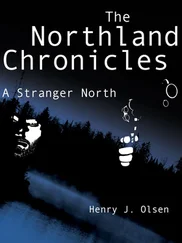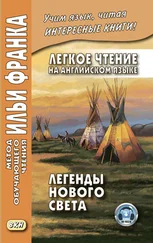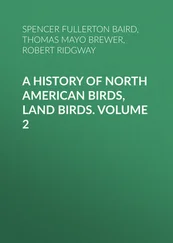North American Agroforestry
Здесь есть возможность читать онлайн «North American Agroforestry» — ознакомительный отрывок электронной книги совершенно бесплатно, а после прочтения отрывка купить полную версию. В некоторых случаях можно слушать аудио, скачать через торрент в формате fb2 и присутствует краткое содержание. Жанр: unrecognised, на английском языке. Описание произведения, (предисловие) а так же отзывы посетителей доступны на портале библиотеки ЛибКат.
- Название:North American Agroforestry
- Автор:
- Жанр:
- Год:неизвестен
- ISBN:нет данных
- Рейтинг книги:4 / 5. Голосов: 1
-
Избранное:Добавить в избранное
- Отзывы:
-
Ваша оценка:
- 80
- 1
- 2
- 3
- 4
- 5
North American Agroforestry: краткое содержание, описание и аннотация
Предлагаем к чтению аннотацию, описание, краткое содержание или предисловие (зависит от того, что написал сам автор книги «North American Agroforestry»). Если вы не нашли необходимую информацию о книге — напишите в комментариях, мы постараемся отыскать её.
Explore the many benefits of alternative land-use systems with this incisive resource North American Agroforestry
North American Agroforestry
North American Agroforestry — читать онлайн ознакомительный отрывок
Ниже представлен текст книги, разбитый по страницам. Система сохранения места последней прочитанной страницы, позволяет с удобством читать онлайн бесплатно книгу «North American Agroforestry», без необходимости каждый раз заново искать на чём Вы остановились. Поставьте закладку, и сможете в любой момент перейти на страницу, на которой закончили чтение.
Интервал:
Закладка:
49 Goldberg, D. E. (1990). Components of resource competition in plant communities. In J. B. Grace & D. Timan (Ed.), Perspectives on plant competition (pp. 27–65). San Diego, CA: Academic Press.
50 Gómez‐Gutierrez, J. M., & Pérez‐Fernández, M. (1996). The “dehesas”: Silvopastoral systems in semiarid Mediterranean regions with poor soils, seasonal climate and extensive utilisation. In M. Etienne (Ed.), Western European silvopastoral systems (pp. 55–70). Paris: INRA Editions.
51 Gravel, D., Mouquet, N., Loreau, M., & Guichard, F. (2010). Patch dynamics, persistence, and species coexistence in metaecosystems. The American Naturalist, 176, 289–302.
52 Hardin, G. (1960). The competitive exclusion principle. Science, 131, 1292–1297.
53 Holmgren, M., Scheffer, M., & Huston, M. A. (1997). The interplay of facilitation and competition in plant communities. Ecology, 78, 1966–1975.
54 Horton, J. L., & Hart, S. C. (1998). Hydraulic lift: A potentially important ecosystem process. Trends in Ecology & Evolution, 13, 232–235. https://doi.org/10.1016/s0169‐5347(98)01328‐7
55 Hubbell, S. P. (2001). The unified neutral theory of species abundance and diversity. Princeton, NJ: Princeton Univ. Press.
56 Inderjit, & Mallik, A. U. (2002). Chemical ecology of plants: Allelopathy in aquatic and terrestrial ecosystems. Basel, Switzerland: Birkhauser.
57 Isabelle, B., Damien, G., & Wilfried, T. (2014). FATE‐HD: A spatially and temporally explicit integrated model for predicting vegetation structure and diversity at regional scale. Global Change Biology, 20, 2368–2378.
58 Johnson, R. J., & Beck, M. M. (1988). Influences of shelterbelts on wildlife management and biology. Agriculture, Ecosystems & Environment, 22–23, 301–335.
59 Jose, S. (1997). Interspecific interactions in alley cropping: The physiology and biogeochemistry (Doctoral dissertation). West Lafayette, IN: Purdue University.
60 Jose, S. (2002). Black walnut allelopathy: Current state of the science. In Inderjit & A. U. Mallik (Eds.), Chemical ecology of plants: Allelopathy in aquatic and terrestrial ecosystems (pp. 149–172). Basel, Switzerland: Birkhauser.
61 Jose, S. (2009). Agroforestry for ecosystem services and environmental benefits: An overview. Agroforestry Systems, 76, 1–10. https://doi.org/10.1007/s10457‐009‐9229‐7
62 Jose, S., & Dollinger, J. (2019). Silvopasture: A sustainable livestock production system. Agroforestry Systems, 93, 1–9. https://doi.org/10.1007/s10457‐019‐00366‐8
63 Jose, S., & Gillespie, A. R. (1998). Allelopathy in black walnut (Juglans nigra L.) alley cropping: I. Spatio‐temporal variation in soil juglone in a black walnut–corn (Zea mays L.) alley cropping system in the mid‐western USA. Plant and Soil, 203, 191–197.
64 Jose, S., Gillespie, A. R., & Pallardy, S. G. (2004). Interspecific interactions in temperate agroforestry. Agroforestry Systems, 61, 237–255.
65 Jose, S., Gillespie, A. R., Seifert, J. R., & Biehle, D. J. (2000). Defining competition vectors in a temperate alley cropping system in the mid‐western USA: 2. Competition for water. Agroforestry Systems, 48, 41–59.
66 Jose, S., Gillespie, A. R., Seifert, J. R., Mengel, D. B., & Pope, P. E. (2000). Defining competition vectors in a temperate alley cropping system in the mid‐western USA: 3. Competition for nitrogen and litter decomposition dynamics. Agroforestry Systems, 48, 61–77.
67 Jose, S., & Holzmueller, E. J. (2008). Black walnut allelopathy: Implications for intercropping. In R. S. Zeng, A. U. Mallik, & S. M. Luo (Eds.), Allelopathy in sustainable agriculture and forestry. New York: Springer. https://doi.org/10.1007/978‐0‐387‐77337‐7_16
68 Jose, S., Williams, R., & Zamora, D. (2006). Belowground ecological interactions in mixed‐species forest plantations. Forest Ecology and Management, 233, 231–239. https://doi.org/10.1016/j.foreco.2006.05.014
69 Kallenbach, R. L., Kerley, M. S., & Bishop‐Hurley, G. J. (2006). Cumulative forage production, forage quality and livestock performance from an annual ryegrass and cereal rye mixture in a pine–walnut silvopasture. Agroforestry Systems, 66, 43–53.
70 Kelty, M. J. (2000). Species interactions, stand structure, and productivity in agroforestry systems In M. S. Ashton & R. Montagnini (Eds.) The silvicultural basis for agroforestry systems (pp. 183–203). Boca Raton, FL: CRC Press.
71 Kort, J. (1988). Benefits of windbreaks to field and forage crops. Agriculture, Ecosystems & Environment, 22–23, 165–191.
72 Kozlowski, T. T., & Pallardy, S.G. (1997). Physiology of woody plants (2nd ed.). San Diego, CA: Academic Press.
73 Krueger, W. C. (1981). How a forest affects a forage crop. Rangelands, 3, 70–71.
74 Kumar, B. M., & Jose, S. (2018). Phenotypic plasticity of roots in mixed tree species agroforestry systems: Review with examples from peninsular India. Agroforestry Systems, 92, 59–69.
75 Lambers, H., Chapin, F. S., III, & Pons, T. L. (1998). Plant physiological ecology. New York: Springer.
76 Lee, K. H., Isenhart, T. M., & Schultz, R. C. (2003). Sediment and nutrient removal in an established multi‐species riparian buffer. Journal of Soil and Water Conservation, 58, 1–8.
77 Lehmkuhler, J. W., Felton, E. E. D., Schmidt, D. A., Bader, K. J., Garrett, H. E., & Kerley, M. S. (2003). Tree protection methods during the silvopastoral‐system establishment in midwestern USA: Cattle performance and tree damage. Agroforestry Systems, 59, 35–42.
78 Li, F. D., Meng, P., Dali, F., & Wang, B. P. (2008). Light distribution, photosynthetic rate and yield in a Paulownia–wheat intercropping system in China. Agroforestry Systems, 74, 163–172.
79 Lin, C. H., McGraw, R. L., George, M. F., & Garrett, H. E. (1999). Shade effects on forage crops with potential in temperate agroforestry practices. Agroforestry Systems, 44,109–119.
80 Lin, C. H., McGraw, R. L., George, M. F., & Garrett, H. E. (2001). Nutritive quality and morphological development under partial shade of some forage species with agroforestry potential. Agroforestry Systems, 53, 269–281.
81 Lovell, S. T., Dupraz, C., Gold, M., Jose, S., Revord, R., Stanek, E., & Wolz, K. J. (2017). Temperate agroforestry research: Considering multifunctional woody polycultures and the design of long‐term field trials. Agroforestry Systems, 92, 1397–1415. https://doi.org/10.1007/s10457‐017‐0087‐4
82 Martin‐Chave, A., Béral, C., & Capowiez, Y. (2019). Agroforestry has an impact on nocturnal predation by ground beetles and Opiliones in a temperate organic alley cropping system. Biological Control, 129, 128–135. https://doi.org/10.1016/j.biocontrol.2018.10.009
83 Mayer, A. C., Stockli, V., Konold, W., & Kreuzer, M. (2006). Influence of cattle stocking rate on browsing of Norway spruce in subalpine wood pastures. Agroforestry Systems, 66, 143–149. https://doi.org/10.1007/s10457‐005‐5460‐z
84 Mcadam, J. H., Sibbald, A. R., Teklehaimanot, Z., & Eason, W. R. (2007). Developing silvopastoral systems and their effects on diversity of fauna. Agroforestry Systems, 70, 81–89. https://doi.org/10.1007/s10457‐007‐9047‐8
85 Miller, A. W., & Pallardy, S. G. (2001). Resource competition across the crop–tree interface in a maize–silver maple temperate alley cropping stand in Missouri. Agroforestry Systems, 53, 247–259.
86 Miller, T. E., Burns, J. H., Munguia, P., Walters, E. L., Kneitel, J. M., Richards, P. M., . . .Buckley, H. L. (2005). A critical review of 20 years’ use of the resource ratio theory. The American Naturalist, 165, 439–448.
87 Moreno Marcos, G., Obrador, J. J., García, E., Cubera, E., Montero, M. J., Pulido, F., & Dupraz, C. (2007). Driving competitive and facilitative interactions in oak dehesas through management practices. Agroforestry Systems, 70, 25–40.
Читать дальшеИнтервал:
Закладка:
Похожие книги на «North American Agroforestry»
Представляем Вашему вниманию похожие книги на «North American Agroforestry» списком для выбора. Мы отобрали схожую по названию и смыслу литературу в надежде предоставить читателям больше вариантов отыскать новые, интересные, ещё непрочитанные произведения.
Обсуждение, отзывы о книге «North American Agroforestry» и просто собственные мнения читателей. Оставьте ваши комментарии, напишите, что Вы думаете о произведении, его смысле или главных героях. Укажите что конкретно понравилось, а что нет, и почему Вы так считаете.












